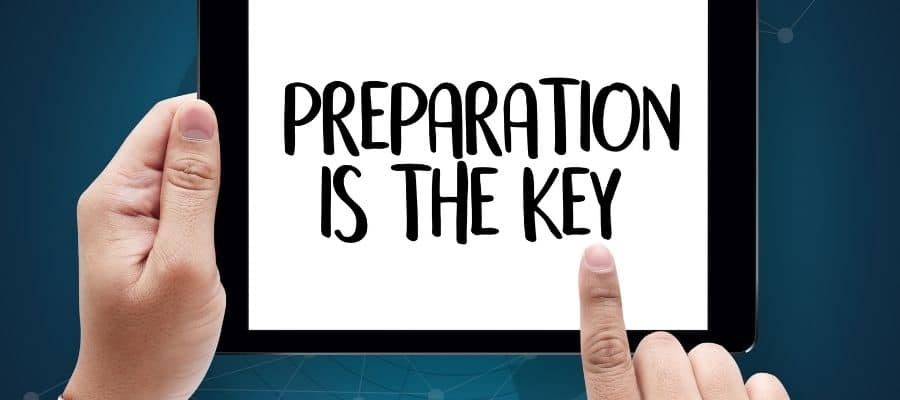Achieving SEO Success in 2017: What You Need to Know
Did you know that as recently as 2015, a comprehensive study conducted by Smart Insights unveiled a rather astonishing revelation? It found that an alarmingly high proportion of organizations—roughly 50%—that ventured into the realm of digital marketing did so without a clear-cut strategy or plan in place. This statistic might appear incredulous at first glance, but the truth is, a significant number of businesses, regardless of their size, continue to navigate the digital landscape without a well-defined direction. To be frank, this lack of strategic foresight is more prevalent among smaller, local enterprises.
One might argue that it’s understandable for businesses operating on tight budgets to demand a substantial return on their investments. However, in their quest to maximize efficiency and reduce costs, some companies inadvertently resort to cutting corners, which can ultimately prove detrimental, particularly when it pertains to search marketing. In this extended blog, we’ll delve deeper into the perils of operating without a robust digital marketing strategy and discuss the adverse effects it can have on businesses, both large and small. We’ll also explore the importance of prudent, data-driven decision-making in today’s highly competitive digital landscape.
Preparation is Key
In the fast-paced and ever-evolving realm of digital marketing, one universal truth prevails: preparation is the cornerstone of success. The digital landscape, akin to a turbulent sea, experiences constant shifts and upheavals, presenting marketers with both boundless opportunities and formidable challenges. However, it is essential to acknowledge that many businesses find themselves swept adrift, unable to navigate these treacherous waters effectively.
In their zealous attempts to stay ahead of the curve, a considerable number of organizations have resorted to an ad hoc approach. They dove headfirst into the digital marketing arena without a well-thought-out strategy or a clear understanding of the dynamic channels available to them. This impulsive approach often involved the indiscriminate allocation of budgets towards Pay-Per-Click (PPC) campaigns, Search Engine Optimization (SEO), content creation, and social media marketing, among other tactics. In the pursuit of immediate results, they unwittingly sacrificed the foundation of any successful digital campaign: strategy.
Unsurprisingly, this reckless foray into the digital wilderness proved to be a recipe for disappointment. Many businesses, lured by the promises of instant success, found themselves entangled in the complex web of the digital world, often with little to show for their investment. The lack of tangible results led to frustration, disillusionment, and a growing sense of skepticism surrounding the efficacy of digital marketing as a whole.
In the wake of this collective misstep, digital marketing began to carry an air of uncertainty. A question mark hung over its viability as a marketing strategy. As a result, more businesses, instead of embracing the potential of digital, clung ever more tenaciously to the antiquated marketing methods of yesteryear. Traditional avenues, despite their diminishing returns, appeared to be a safer bet in the face of the digital unknown.
In the subsequent sections of this blog, we will delve deeper into the ramifications of this ill-conceived approach and explore the pivotal role of careful preparation in the digital marketing landscape. We will emphasize the importance of building a robust strategy, staying informed about the latest trends, and adapting to the ever-changing digital environment. Only by doing so can businesses truly harness the immense power and potential that digital marketing has to offer in the modern age.
There’s Nothing New Under the Sun
In the iconic military strategy book, “The Art of War,” author Sun Tzu was able to succinctly state the importance of strategy with one sentence:
“Strategy without tactics is the slowest route to victory. Tactics without strategy are the noise before defeat.”
Simply put, a great strategy is useless if you don’t have the tools and/or a detailed plan with which to implement it. Thus, if you use marketing tactics like PPC and SEO without an overall strategy (except to focus on hyper-competitive elements like commercial keywords), excessive costs and poor results are to be expected.
Confused? Consider this example:
One of our clients is responsible for operating one of the largest (and most popular) nightlife venues in the United States. Historically, this business has been able to keep a huge chunk of the market, up to a 25-mile radius, to themselves. But, over the past 2-3 years or so, several large venues have opened in the same area — now there are 10-15 similar venues within the same radius. What hasn’t changed is the search strategy – targeting people who reside in the 25-mile radius using PPC on a macro level and local SEO on a micro level.
Although the company has spent a lot of money to get their site ranked on the first page in the local and organic listings (along with PPC and other online marketing strategies) it is losing business. In the past, the solution to this problem has been to spend more money on PPC advertising that targets the customers within their demographic. But, if look at this problem objectively, you will see that it is fundamentally flawed.
All nightlife (EDM fans) are aware that our client’s venue is the best in the entire country. They know this and are willing to go out of their way for a truly thrilling experience — they are not the issue. We want to attract those who are just looking for a fun way to blow off steam. And with them, the priority becomes price and location. Keep in mind that while our client is truly the best choice, all companies will say the same on the internet and ticket prices and table prices are pretty competitive across the board. To solve this problem, we must think outside of the box. We cannot simply search within a wider radius and try to persuade potential customers to ignore several conveniently located venues.
How can these issues be solved? How do we change our approach? Since our research clearly shows that location is a key factor, why not go down instead of up? That is, instead of concentrating on the potential customers within a 25-mile radius, we pare our target down to those who stay a mere five miles away. Making this shift in perspective will open up new doors – in this case, we learned that there are well over 100k people that live within 15 miles of the venue. Imagine what we could do if we were able to build awareness of the great venue that lay right at the doorstep.
When you look at this strategy from a basic point of view, it doesn’t seem much different from the first tactics. And in fact, it is a little similar i.e. we’ll probably use the same channels. But, the difference is we will be making a conceptual change from consumers who lived far away (who we had to convince to bypass other choices to visit our location) to a more local audience with less competition. In this way, we can use digital marketing tactics to generate brand awareness in the bigger kill zone while still being highly visible to local consumers as well.
If it weren’t for digital marketing and reexamining our goals and objectives, this tactical change would never have been made. We would have kept on plodding forth with Google AdWords (and losing more revenue) with no rewards for our efforts.
Digital Marketing Planning Models and Methodologies
In today’s digital age, staying ahead of the curve is paramount for businesses looking to establish a strong presence in the online landscape. The rapid evolution of technology and consumer behavior necessitates a proactive approach, one that harnesses the power of effective digital learning techniques. To acquaint you with these essential concepts, we’ve prepared a comprehensive outline of the strategies we’ve successfully implemented with our diverse clientele, ranging from industry giants to nimble startups. These tactics have not only enhanced their digital strategies but also significantly boosted the efficacy of their digital campaigns.
SOSTAC
The marketing tactic was created by PR Smith and is useful for those who are interested in developing an all-encompassing digital marketing plan. It can be applied at a tactical level or used to create an overarching strategy.
The acronym stands for:
1. Situation Analysis: Where are you now?
2. Objectives: What goal do you want to reach there?
3. Strategy: In general terms, how do you get there?
4. Tactics: In exact terms, how are you going to get there? What channels are you going to use?
5. Actions: Processes, systems, checklists, and guidelines
6. Control: Metrics and measure to make sure that you are making progress
Even if you don’t choose to follow this methodology, asking yourself these questions is a worthwhile endeavor. The process and the insight gained from a comprehensive situation analysis is worth every second that you put into it.
RACE
Like the SOSTAC methodology, this model can be used to determine the steps that you must take on a tactical level as well as to develop your entire plan.
Before we delve deeper into this methodology, it is important to note that there is another step “Plan” that should be placed before the “Reach” stage, but PRACE doesn’t make for a good mnemonic device.
RACE pertains to the buyer life-cycle and the acronym stands for:
1. Plan: The planning stage – This is the stage where you should be looking at strategy, opportunities, and actions. You must also take the time to create an online value proposition, define customer personas, review both your competition and the marketplace. This information will be fed into your channel to distribute your digital marketing communications
2. Reach: The exploration stage- This covers owned, earned, and paid media and will help you make sure that your site is visible across content hubs, relevant blogs, social media and search engines.
3. Act: The decision-making stage- The is the part of the process where we convince site visitors to take their relationship with your brand to the next level and get in contact i.e. sign up for a newsletter or downloading a white paper.
4. Convert: The purchasing stage: This is the qualified sales lead or the sale and it is where you begin your journey with the customer
5. Engage: The advocacy stage- In this stage, we build on the initial conversion to create a long-term relationship with the client.
The Verdict
When it comes to choosing between the two methodologies, RACE is better used as a starting point rather than a strategic approach since it can be easily applied to a single channel like local SEO. On the other hand, SOSTAC will take time and resources to achieve optimal results and can be overkill for small businesses who are only looking to improve their local visibility. Starting small gives you the chance to see tangible results that will allow you to develop comprehensive measurement and planning practices.





